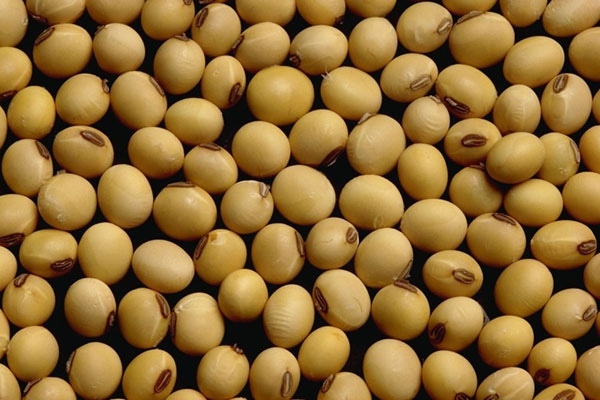August 5, 2016

In an effort to help farmers improve profitability, Beck’s works hard to better understand the yield gap in corn and soybeans. The term yield gap has several definitions in the industry.
University scientists define it as the difference between simulated potential yield using a crop model and actual yields. At Beck’s, the yield gap is defined as the difference between record yields observed in yield contests and actual yields in marketing areas.
For corn, the seed company uses 532 Bu./A. observed by David Hula (National Corn Growers Association 2015 National Corn Yield Contest record) as the benchmark. The benchmark for soybeans is 161 Bu./A. as observed by Kip Cullers in 2010. These benchmarks offer clues as to the actual yield potential of modern genetics when management practices are optimized.
In some cases, the practices that led to record yields are not economical in that the costs are not paid for in additional yield. On the other hand, these yield contest practices demonstrate that there is a greater yield potential on farms across the Midwest than we commonly believed.
At Beck’s Practical Farm Research (PFR)® sites and in farmer’s fields across the Midwest, Beck’s conducts high-yield management research with 300 Bu./A. corn and 100 Bu./A. soybean yield attempts. In these plots, Beck’s manage the crop so that the only limiting factors are environmental such as heat, sunlight intensity, and rain for non-irrigated sites. The seed company hopes to identify new management practices that increase whole farm yield while decreasing production cost/Bu. with the data from these attempts.
The lists below highlights our high-yield management practices for corn and soybeans as well as the rationale for the practices.
High-Yield Corn Management Practices
Seeding Rates between 38,000 and 42,000 seeds/A.:
Ears/A. is a primary yield component.
Optimum levels of potassium and phosphorous as determined by soil test:
Without optimum levels of potassium, the crop can lodge. Both phosphorous and potassium are important for stalk strength. Phosphorous optimizes kernel weight and promotes earlier crop maturity.
Starter and in-furrow fertilizer:
Yield contest winners utilized starter and in-furrow fertilizer. In our observations, this combination appears to create more vigorous early growth.
Fungicide at the V6 to V8 growth stage:
Strobilurin fungicides upregulate photosynthesis. When applying fungicide at earlier growth stages, we attempt to create larger ear sizes by upregulating photosynthesis during the critical period of ear formation.
Multiple applications and forms of nitrogen:
Studies shown that optimum nitrogen is realized when at least two forms of nitrogen are applied at two different timings.
Humic acids and foliar feeding:
USDA studies and PFR have shown that products containing humic acid can increase yield. We typically apply these products with micronutrients as foliar applications to assure adequate micronutrients.
Narrow row spacing:
Beck’s PFR has shown an advantage to 20 in. row spacing in corn. Where planting equipment is available, we use narrow row corn in our high-yield attempts.
Optimum weed control:
Beck’s PFR also typically uses the maximum label rates of pre-herbicides followed by post applications of glyphosate or glufosinate.
Late season fungicide:
Fungicides are applied from VT to R1 to reduce incidences of disease and lodging. In some cases, fungicides are applied at VT followed by a second application two weeks later to optimize test weight.
Plant tissue testing:
Plant tissue testing is used throughout the season to identify deficiencies that could be addressed with foliar feeding or Y-drop applications.
Optimized harvest:
High-yield attempts are typically harvested between 20 and 24 percent moisture to reduce harvest loss.
High-Yield Soybean Management Practices
Early planting dates:
Achieve as much canopy as possible before soybeans begin flowering.
Seed treatment:
Escalate™ yield enhancement system provides early season control of seedling blights as well as insects such as bean leaf beetles. The addition of ILeVO® prevents yield loss from Sudden Death Syndrome.
Inoculation:
High-yield attempts are inoculated with rhizobia and nodulation enhancing products.
Seeding rates:
Seeding rates vary across sites. Some sites believe seeding rates above 140,000 seeds/A. reduce yield while others will seed between 140,000 and 180,000 seeds/A.
Row spacing:
Most high-yield studies are planted in 15 in. rows but some are planting at 30 in.
Starter and in-furrow fertilizer:
Beck’s is experimenting with various start formulations for in-furrow or 2x2 use to optimize the canopy before the summer solstice.
Humic acids and foliar feeding:
Foliar fertilizer is applied to reduce micronutrient deficiency. Products containing humic acid have proven to enhance yield in Beck’s PFR.
Fungicides and insecticides:
Soybean aphids and Japanese beetles can be managed with insecticides and fungicides. They also optimize yield and control diseases caused by fungi.
Plant tissue testing:
Plant tissue testing is used throughout the season to identify deficiencies that could be addressed with foliar feeding or Y-drop applications.
Optimized harvest:
High-yield attempts are harvested in a timely fashion to prevent yield loss from lodging or shattering
To understand the benefit of these high-yield practices, Beck’s PFR conducts separate studies such as nitrogen timing, plant population, fungicide vs no-fungicide, and foliar fertilizer vs no-foliar fertilizer. The main goal of this research is to reduce yield gaps in corn and soybeans while optimizing profitability.
You May Also Like




